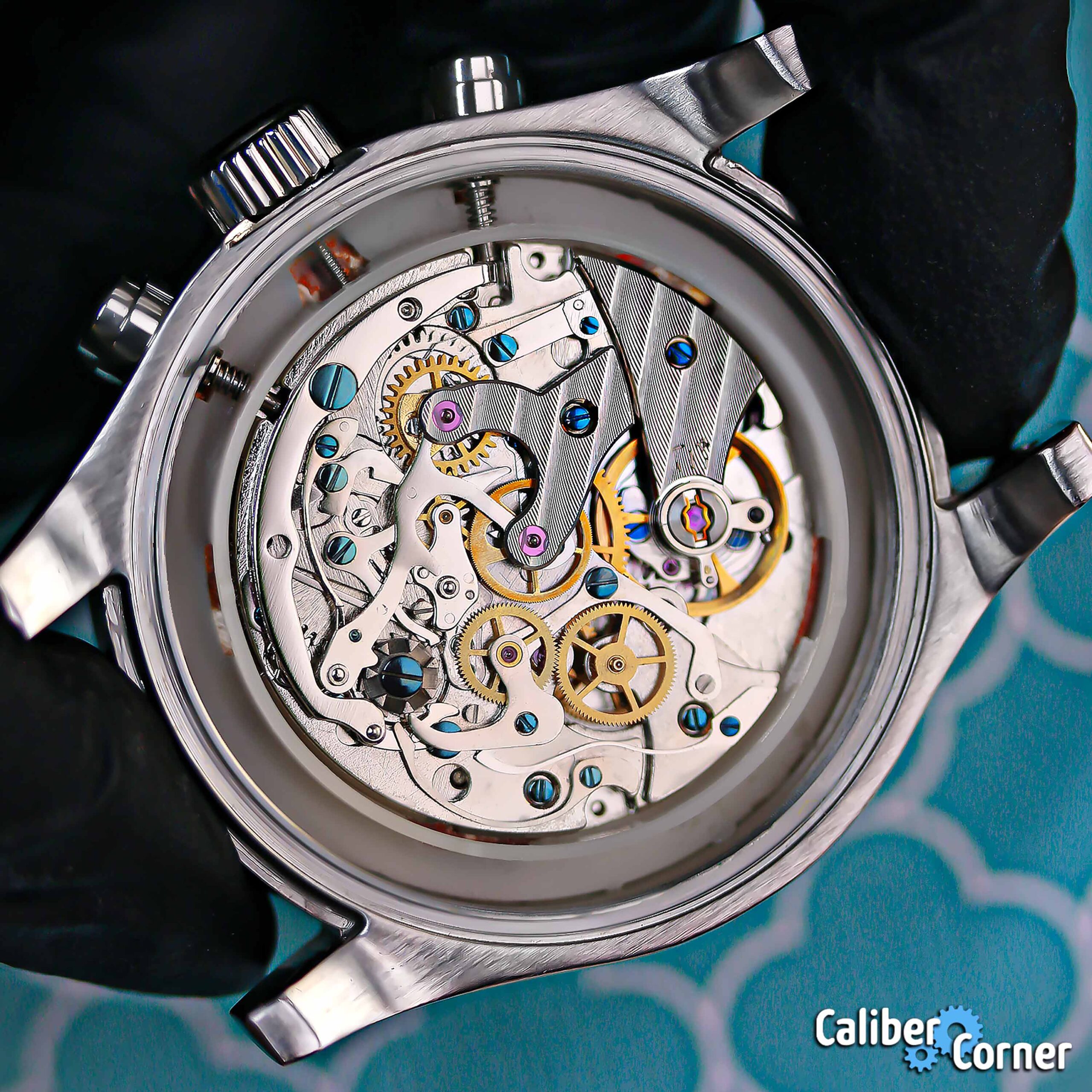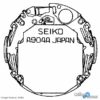Some of the topics covered in this caliber listing:
What are “jewels” in a watch?
Jewels in a watch are tiny translucent pink or purple stones, also called rubies. Combined with proper amounts of lubricant, watch jewels serve as bearings to reduce friction in areas of the movement that would otherwise be metal to metal. Having jewels improves the accuracy and longevity of a watch.
Are the rubies/jewels in a watch worth anything?
Not really. You can buy 100 rubies for under $25 USD. So, don’t get too excited over the word ruby or jewel and think you hit the jackpot because your watch has 17 of them inside.
What is a watch jewel made from?
Most modern watches have jewels are typically made from synthetic sapphire or synthetic ruby, derived from corundum in a “flame fusion” (no, not the Invicta word for the glass over the face of a watch, although that’s probably where they got it from) process that was invented in 1902 by Auguste Victor Louis Verneuil. Before that (and in some haute horology of today), natural stones were used as jewels – specifically: natural sapphire, natural ruby, garnet, and even diamond. So, again, don’t get too excited here… most are synthetically man-made in labs.
When and where were watch jewel bearings invented? Who invented them?
Here, let WikiPedia answer that one:
“Jewel bearings were invented in 1704 for use in watches by Nicolas Fatio de Duillier, Peter Debaufre, and Jacob Debaufre, who received an English patent for the idea.” –source
What are the common jewel types in a watch?
- Cap jewels
- Hole jewels
- Pallet jewels (pallet stones)
- Impulse jewels (roller jewels)
The most common jewels in a watch movement are hole jewels and cap jewels aka capstone (such as what you see under the anti-shock device over the balance wheel).
In the image below, the two jewels on the left are hole jewels – you can see the pivot coming up through the center of the hole. The jewel on the right is a cap jewel.
Below is a hole jewel with a brass setting for a vintage Elgin pocket watch. You can see the small size compared to a U.S. quarter:
How many jewels should a watch have?
It depends on the movement and where it could benefit from reduced friction. For example, a watch with a lot of complications it likely to have move jewels than a time-only watch. A 17 jewels timepiece used to be considered a fully jeweled watch, but that was back in a time when most watches were time-only, handwound pieces. Many basic manual-wind mechanical watches are equipped with 17 jewels (for example, the ETA/Unitas 6497-1), and popular self-winding automatic watched have 25 jewels (for example, the ETA 2824-2). The number can be more or less.
Why are there so many “17 Jewels” vintage watches?
Many vintage watches that were made by overseas watch companies for the USA market were designed to have 17 jewels because anything more than that would incur import duties and taxes. This is why a watch for the American market would ship with 17 jewels, while the same piece intended for the European domestic market could have more. As of 2022, the US Customs Harmonized Tariff Schedule still has separate categories for watch with 17 jewels and more then 17 jewels.
Why are watch movements marked with the number of jewels it has?
This is a customs requirement. Speaking specifically for watches imported to the United States, there are customs rules (even in 2022) that state that movements must be marked on the the top plate or at least one bridge, with the number of jewels that serve a mechanical purpose as frictional bearings. The jewel count must be written out – so, a 17J movement would be marked SEVENTEEN 17 JEWELS.
Are more jewels better?
More jewels isn’t necessarily better, it just depends on the watch and the purpose of the jewels. More complications often means more moving parts, which means more friction and the need for more jewels (see below for a great example). There have been watch brand who put jewels in places that didn’t need jewels, just so they could advertise that their timepiece had more jewels.
What is the highest number of jewels in a watch?
The record holder for the watch with the most jewels goes to Vacheron Constantin and their Reference 57260 pocket watch with 52 complications. The caliber 3750 in this watch has 242 jewels, all of which are actually used.
There are vintage watches with excessive jewel counts such as the infamous 110 jewels watch from Clinton Watch Co. Brand like Hampden and Waltham also had 100 and 110 jewel watches. Waltham even called their the Centennial lol. Such watches were created to pull a fast one on unsuspecting consumers who were lead to believe that more is better when it comes to watch rubies. A majority of the 100+ jewels were unused.
How many jewels does a Rolex have?*
It depends on the model and movement inside. They have as many as they need.
*Question thrown in for search juice!
Are there watches with zero jewels?
Yes, there are many watches, particularly of the quartz movement variety, that have no jewels.
Is zero jewels bad?
Again, it depends on the watch. Is it a mechanical watch with 0 jewels? Yes, probably bad for accuracy and longevity. Is it a quartz watch with 0 jewels? Not so bad, because it is powered by a stepping motor which requires less torque and therefore less friction to advance the hands.




 network of watch sites
network of watch sites












Recent Comments
Correction, wrong watch. The Vandaag Schallmauer Automatik has this movement. €1880
This caliber has a skeletonized version... beautiful!
My Bergeon balance tack is widely used by me. E.g. to see if the balance…
If they meet the “Swiss Made” standard, then they can be called Swiss made. Regardless…
I don't know if anyone checks this page anymore, according to dates. I have a:…
I bought the initial version of the Wasson field watch w/ the R150 in it.…
V8 = S = swiss made